Physics - Optics: Refracted Surface (5 of 5)
TLDRThis educational script demonstrates the process of finding the image of an object through a refracting surface, such as a glass lens. It explains the use of Snell's law with given indices of refraction, object distance, and radius of curvature to calculate the image distance. The example concludes with the determination of a virtual image's position and magnification, revealing an upright, half-sized image 15 centimeters from the surface, emphasizing the principles of light refraction and image formation.
Takeaways
- 🔍 The script explains the process of finding the image of an object when light rays cross a refracting surface.
- 🌐 The object is in air and the observer is on the opposite side of the boundary.
- 🧭 The index of refraction on the object side is 1, and on the other side, it's 1.5, likely representing glass.
- 📏 The radius of curvature of the refracting surface is given as -10 centimeters, indicating it bends towards the observer.
- 📘 The lens formula used is \( \frac{n_1}{s} + \frac{n_2}{s'} = \frac{n_2 - n_1}{r} \), where \( s \) is the object distance, \( s' \) is the image distance, and \( r \) is the radius of curvature.
- ✍️ The values are substituted into the lens formula to find \( s' \), the distance to the image.
- 🔢 Simplification of the equation leads to finding \( s' \) as -15 centimeters, indicating a virtual image.
- 🔄 The negative sign of \( s' \) means the image is on the same side as the object, 15 centimeters from the surface.
- 🔎 To determine the size of the image, the magnification equation is used, which is \( m = -\frac{n_1 s'}{n_2 s} \).
- 📏 The calculated magnification is one half, meaning the image is upright and half the size of the object.
- 📚 The script concludes by stating that the image is virtual, upright, half the size of the object, and located 15 centimeters from the refracting surface.
Q & A
What is the index of refraction on the object side?
-The index of refraction on the object side (n1) is 1.
What is the index of refraction on the observer's side?
-The index of refraction on the observer's side (n2) is 1.5, which is probably glass.
What is the radius of curvature of the refracting surface?
-The radius of curvature of the refracting surface is 10 centimeters, and it is bent towards the observer, making it a negative value.
What is the object distance (s) in the problem?
-The object distance (s) is 20 centimeters.
How is the radius of curvature represented in the equation?
-The radius of curvature (r) is represented as a negative number because it is bent towards the observer, making it -10.
What equation is used to find the image distance (s')?
-The equation used is n1/s + n2/s' = (n2 - n1)/r.
What is the calculated image distance (s')?
-The calculated image distance (s') is -15 centimeters.
What does the negative sign in the image distance indicate?
-The negative sign indicates that the image is virtual and on the same side as the object.
How is the magnification of the image determined?
-The magnification of the image is determined using the equation magnification = -n1 * s' / (n2 * s).
What is the magnification and orientation of the image?
-The magnification is 0.5, meaning the image is half the size of the object, and since it's a positive magnification, the image is upright.
Outlines
🔍 Finding the Image in Refraction
The script explains the process of determining the image position and magnification when an object is viewed through a refracting surface, such as glass, with a negative radius of curvature. The object is in air, and the observer is on the other side of the boundary. The index of refraction on the object side is 1, and on the other side, it is 1.5. Using Snell's law, the script demonstrates the calculation of the image distance (s') and magnification. The radius of curvature is given as -10 cm, and the object distance is 20 cm. The calculation results in a virtual image located 15 cm from the surface, half the size of the object, and upright.
Mindmap
Keywords
💡Refraction
💡Index of Refraction
💡Object Distance
💡Image Distance
💡Radius of Curvature
💡Virtual Image
💡Lensing Equation
💡Magnification
💡Upright Image
💡Negative Radius of Curvature
💡Simplification
Highlights
Demonstration of finding the image of an object when light rays pass through a refracting surface.
Object is in air and observer is on the opposite side of the boundary.
Index of refraction on the object side is 1, while the other side is 1.5, likely glass.
Radius of curvature is 10 cm, but negative due to bending towards the observer.
Use of lens formula n1/s + n2/s' = n2 - n1/r to find the image.
Plugging in the numbers to solve for the image distance s'.
Simplification of the lens formula to find s' = -15 cm, indicating a virtual image.
Explanation of the negative sign meaning the image is on the same side as the object.
Virtual image located approximately 15 cm from the refracting surface.
Use of magnification equation to determine the size of the image.
Calculation of magnification as half the size of the object.
Positive magnification indicating the image is upright and in the same direction as the object.
Placement of the image upright and half the size, 15 cm away from the surface.
Clarification that s' = -15 cm means the image is in front of the surface, not behind.
Virtual image characteristics explained in the context of the problem.
Step-by-step problem-solving approach to finding and characterizing the image.
Transcripts
Browse More Related Video
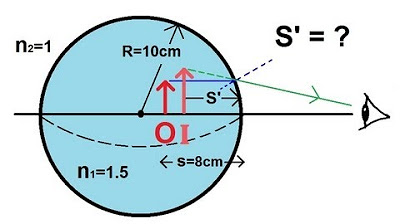
Physics - Optics: Refracted Surface (4 of 5) Glass Ball
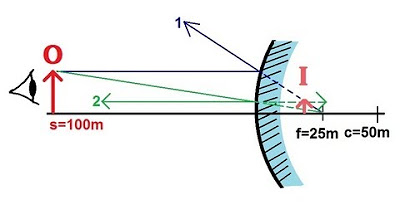
Physics 54 Optics: Mirrors (4 of 6) Convex Mirror
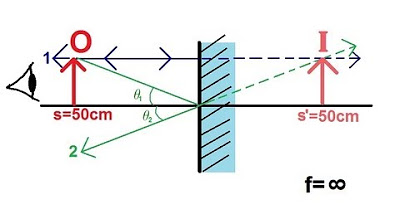
Physics 51/54 - Optics: Mirrors (6 of 6) Flat Mirror

Physics - Optics: Lenses (2 of 2) Diverging Lens
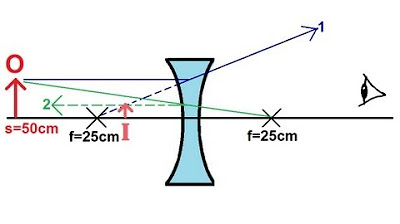
Physics - Optics: Lenses (1 of 2) Diverging Lens
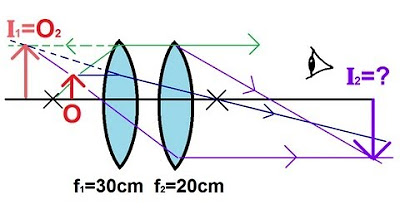
Physics - Optics: Lenses (2 of 5) Lens Combinations - Two Converging Lenses
5.0 / 5 (0 votes)
Thanks for rating: